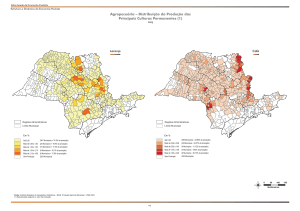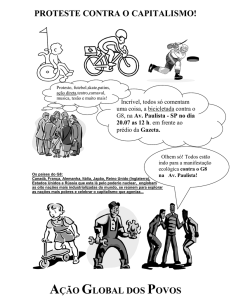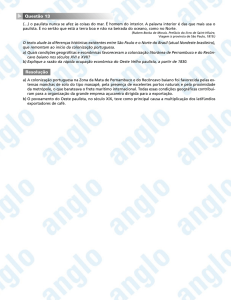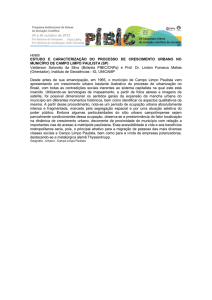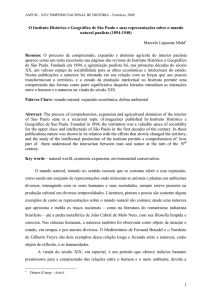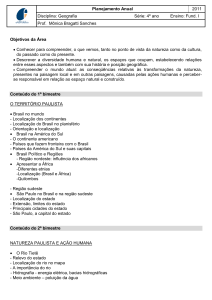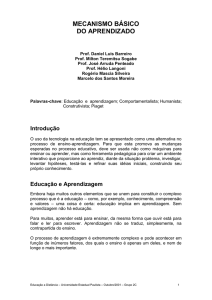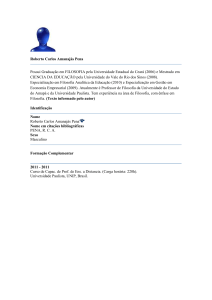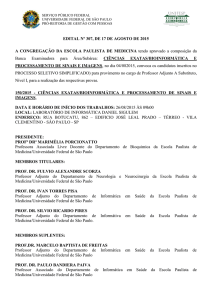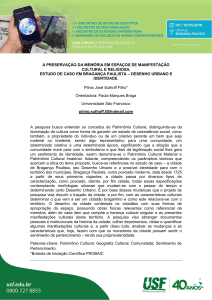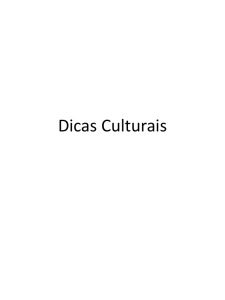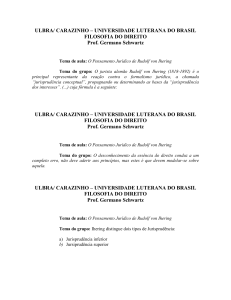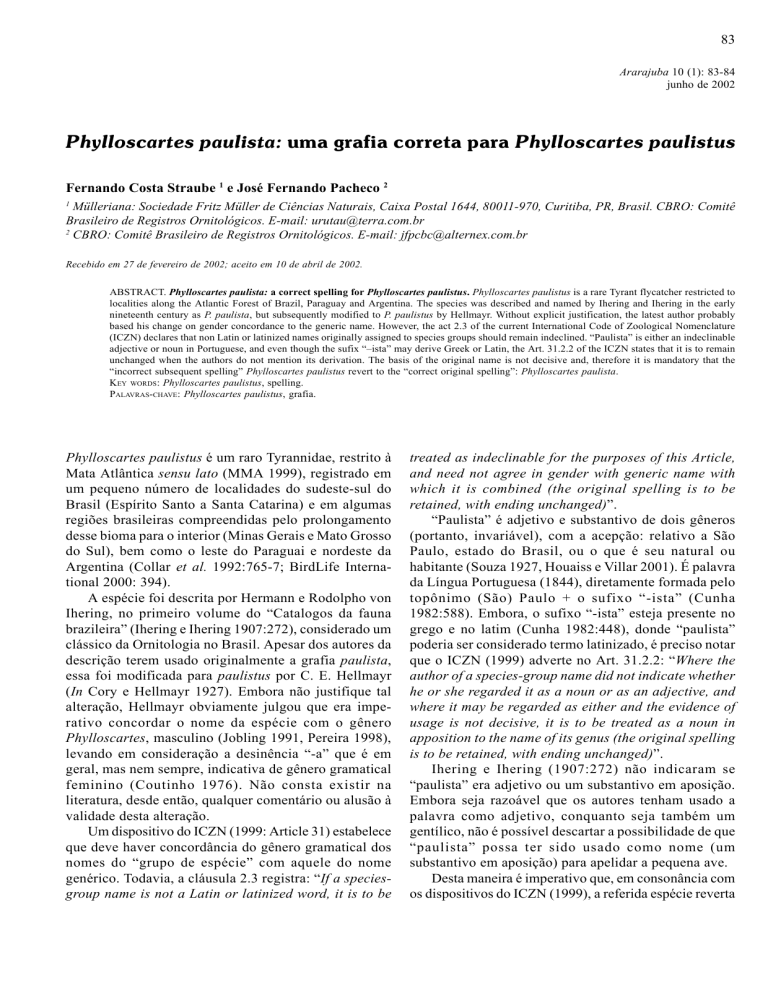
83
Ararajuba 10 (1): 83-84
junho de 2002
Phylloscartes paulista: uma grafia correta para Phylloscartes paulistus
Fernando Costa Straube 1 e José Fernando Pacheco 2
1
Mülleriana: Sociedade Fritz Müller de Ciências Naturais, Caixa Postal 1644, 80011-970, Curitiba, PR, Brasil. CBRO: Comitê
Brasileiro de Registros Ornitológicos. E-mail: [email protected]
2
CBRO: Comitê Brasileiro de Registros Ornitológicos. E-mail: [email protected]
Recebido em 27 de fevereiro de 2002; aceito em 10 de abril de 2002.
ABSTRACT. Phylloscartes paulista: a correct spelling for Phylloscartes paulistus. Phylloscartes paulistus is a rare Tyrant flycatcher restricted to
localities along the Atlantic Forest of Brazil, Paraguay and Argentina. The species was described and named by Ihering and Ihering in the early
nineteenth century as P. paulista, but subsequently modified to P. paulistus by Hellmayr. Without explicit justification, the latest author probably
based his change on gender concordance to the generic name. However, the act 2.3 of the current International Code of Zoological Nomenclature
(ICZN) declares that non Latin or latinized names originally assigned to species groups should remain indeclined. “Paulista” is either an indeclinable
adjective or noun in Portuguese, and even though the sufix “–ista” may derive Greek or Latin, the Art. 31.2.2 of the ICZN states that it is to remain
unchanged when the authors do not mention its derivation. The basis of the original name is not decisive and, therefore it is mandatory that the
“incorrect subsequent spelling” Phylloscartes paulistus revert to the “correct original spelling”: Phylloscartes paulista.
KEY WORDS: Phylloscartes paulistus, spelling.
PALAVRAS-CHAVE: Phylloscartes paulistus, grafia.
Phylloscartes paulistus é um raro Tyrannidae, restrito à
Mata Atlântica sensu lato (MMA 1999), registrado em
um pequeno número de localidades do sudeste-sul do
Brasil (Espírito Santo a Santa Catarina) e em algumas
regiões brasileiras compreendidas pelo prolongamento
desse bioma para o interior (Minas Gerais e Mato Grosso
do Sul), bem como o leste do Paraguai e nordeste da
Argentina (Collar et al. 1992:765-7; BirdLife International 2000: 394).
A espécie foi descrita por Hermann e Rodolpho von
Ihering, no primeiro volume do “Catalogos da fauna
brazileira” (Ihering e Ihering 1907:272), considerado um
clássico da Ornitologia no Brasil. Apesar dos autores da
descrição terem usado originalmente a grafia paulista,
essa foi modificada para paulistus por C. E. Hellmayr
(In Cory e Hellmayr 1927). Embora não justifique tal
alteração, Hellmayr obviamente julgou que era imperativo concordar o nome da espécie com o gênero
Phylloscartes, masculino (Jobling 1991, Pereira 1998),
levando em consideração a desinência “-a” que é em
geral, mas nem sempre, indicativa de gênero gramatical
feminino (Coutinho 1976). Não consta existir na
literatura, desde então, qualquer comentário ou alusão à
validade desta alteração.
Um dispositivo do ICZN (1999: Article 31) estabelece
que deve haver concordância do gênero gramatical dos
nomes do “grupo de espécie” com aquele do nome
genérico. Todavia, a cláusula 2.3 registra: “If a speciesgroup name is not a Latin or latinized word, it is to be
treated as indeclinable for the purposes of this Article,
and need not agree in gender with generic name with
which it is combined (the original spelling is to be
retained, with ending unchanged)”.
“Paulista” é adjetivo e substantivo de dois gêneros
(portanto, invariável), com a acepção: relativo a São
Paulo, estado do Brasil, ou o que é seu natural ou
habitante (Souza 1927, Houaiss e Villar 2001). É palavra
da Língua Portuguesa (1844), diretamente formada pelo
topônimo (São) Paulo + o sufixo “-ista” (Cunha
1982:588). Embora, o sufixo “-ista” esteja presente no
grego e no latim (Cunha 1982:448), donde “paulista”
poderia ser considerado termo latinizado, é preciso notar
que o ICZN (1999) adverte no Art. 31.2.2: “Where the
author of a species-group name did not indicate whether
he or she regarded it as a noun or as an adjective, and
where it may be regarded as either and the evidence of
usage is not decisive, it is to be treated as a noun in
apposition to the name of its genus (the original spelling
is to be retained, with ending unchanged)”.
Ihering e Ihering (1907:272) não indicaram se
“paulista” era adjetivo ou um substantivo em aposição.
Embora seja razoável que os autores tenham usado a
palavra como adjetivo, conquanto seja também um
gentílico, não é possível descartar a possibilidade de que
“paulista” possa ter sido usado como nome (um
substantivo em aposição) para apelidar a pequena ave.
Desta maneira é imperativo que, em consonância com
os dispositivos do ICZN (1999), a referida espécie reverta
84
Ararajuba 10 (1): 83-84
à sua grafia correta original (“correct original spelling”):
Phylloscartes paulista Ihering e Ihering 1907, em
contraposição à sua subseqüente grafia incorreta
(“incorrect subsequent spelling”): Phylloscartes paulistus.
REFERÊNCIAS
BirdLife International (2000) Threatened birds of the
world. Barcelona and Cambridge, U. K.: Lynx Edicions
and BirdLife International.
Collar, N. J., L. P.Gonzaga, N. Krabbe, A. Madroño Nieto,
L. G. Naranjo, T. A. Parker III & D. C. Wege (1992)
Threatened Birds of the Americas. Cambridge, U. K.:
International Council for Bird Preservation.
Cory, C. B. e C. E. Hellmayr (1927) Catalogue of birds of
the Americas. Field Mus. Nat. Hist. Zool. Ser. 13, part
5. [Publ. 242].
Coutinho, I. de L. (1976). Pontos de gramática histórica.
Rio de Janeiro: Ao Livro Técnico.
Cunha, A. G. (1982) Dicionário etimológico da língua
Notas
portuguesa. Rio de Janeiro: Nova Fronteira.
Houaiss, A. e M. S. Villar (2001) Dicionário Houaiss da
Língua Portuguesa. Rio de Janeiro: Objetiva (Instituto Antonio Houaiss de Lexicografia).
ICZN (1999) International Code of Zoological Nomenclature. London: International Trust for Zoological
Nomenclature.
Ihering, H. e R. Ihering 1907. As aves do Brazil. Catálogos da Fauna Brazileira, v.1. São Paulo: Museu
Paulista.
Jobling, J. A. (1991) A dictionary of scientific bird names.
Oxford: Oxford University Press.
MMA (1999). Avaliação e ações prioritárias para a conservação da biodiversidade da Mata Atlântica e Campos sulinos. Brasília: Ministério do Meio Ambiente.
Pereira, I. (1998) Dicionário Grego – Português e Português – Grego. Braga: Livraria Apostolados da Imprensa.
Souza, B. (1927) Onomástica geral da geographia brasileira. Rev. Inst. Geogr. Hist. Bahia 53:3-319.

